High Seas Fleet Surrender 31 – The Meeting of the Fleets
| < 30 – The Grand Fleet prepares for the surrender | Δ Index | 32 – The Merchant Navy > |
The light cruisers HMS Cardiff and HMS Phaeton left their base at Rosyth at 1.35am, collected the 13th destroyer flotilla off Fidra, then headed out to Rendezvous X, 50 miles east of the Isle of May, the destroyers forming a lookout screen 3 miles ahead.
At 7.36 they sighted the High Seas Fleet. Cardiff turned in front and led the German ships towards the approaching Grand Fleet, sailing in two columns.
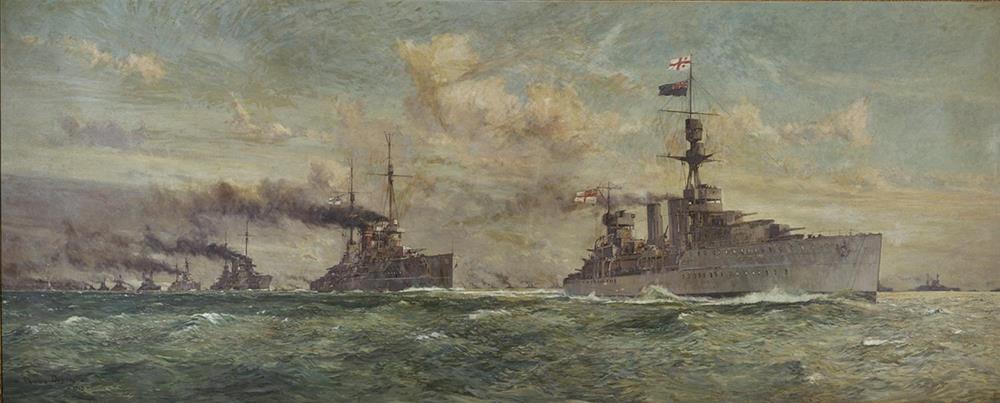
HMS Cardiff leads the High Seas Fleet – painting by Charles Edward Dixon
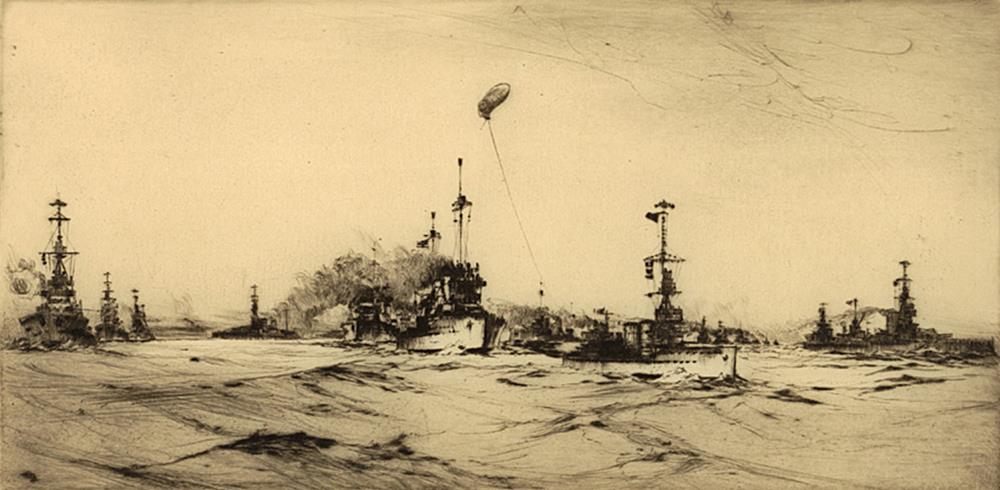 HMS Cardiff leads the High Seas Fleet – engraving by Frank Mason
HMS Cardiff leads the High Seas Fleet – engraving by Frank Mason
This is the extract from the log-book of HMS Cardiff for 21st November 1918 . . .
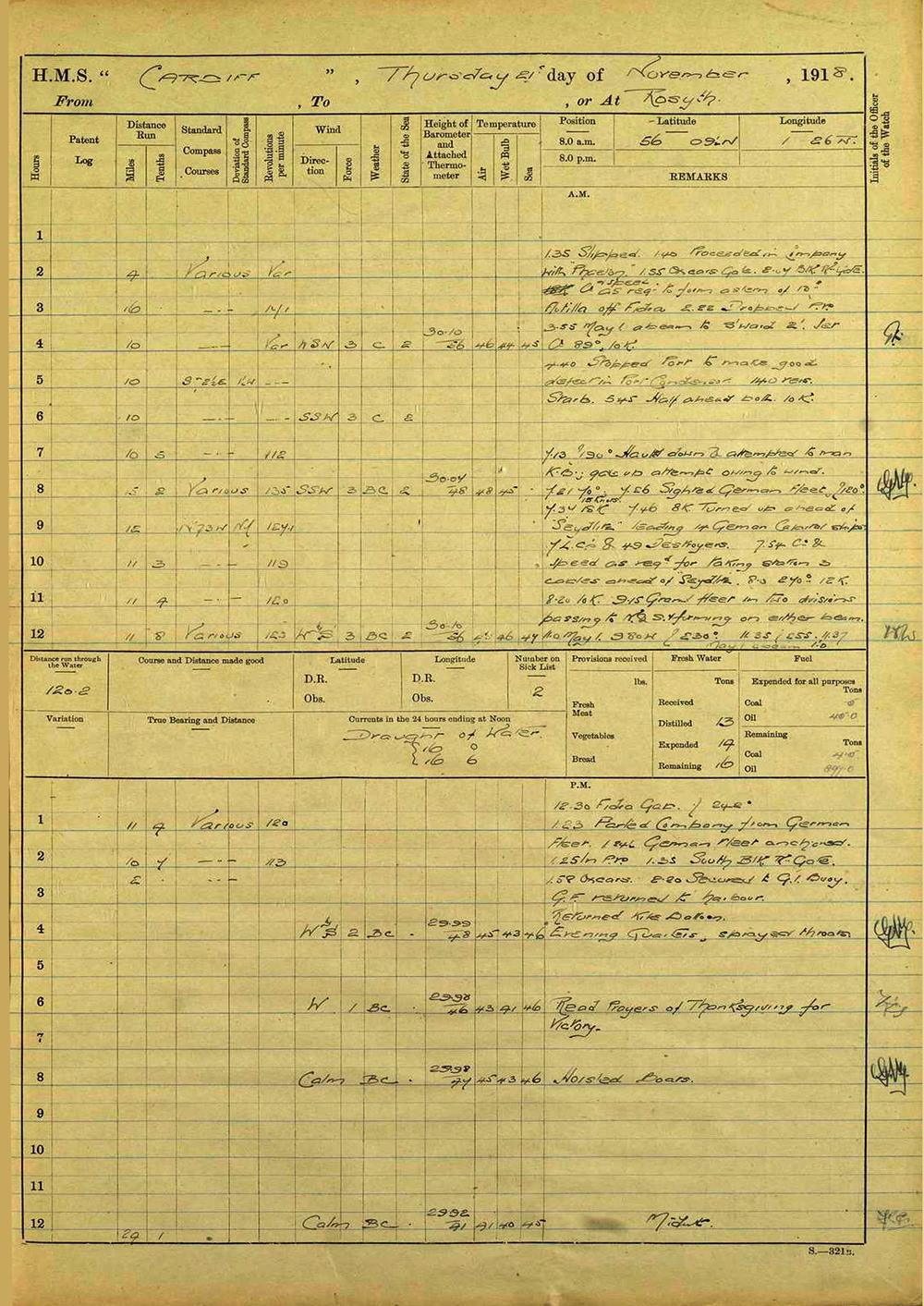
. . . and a transcript of the text
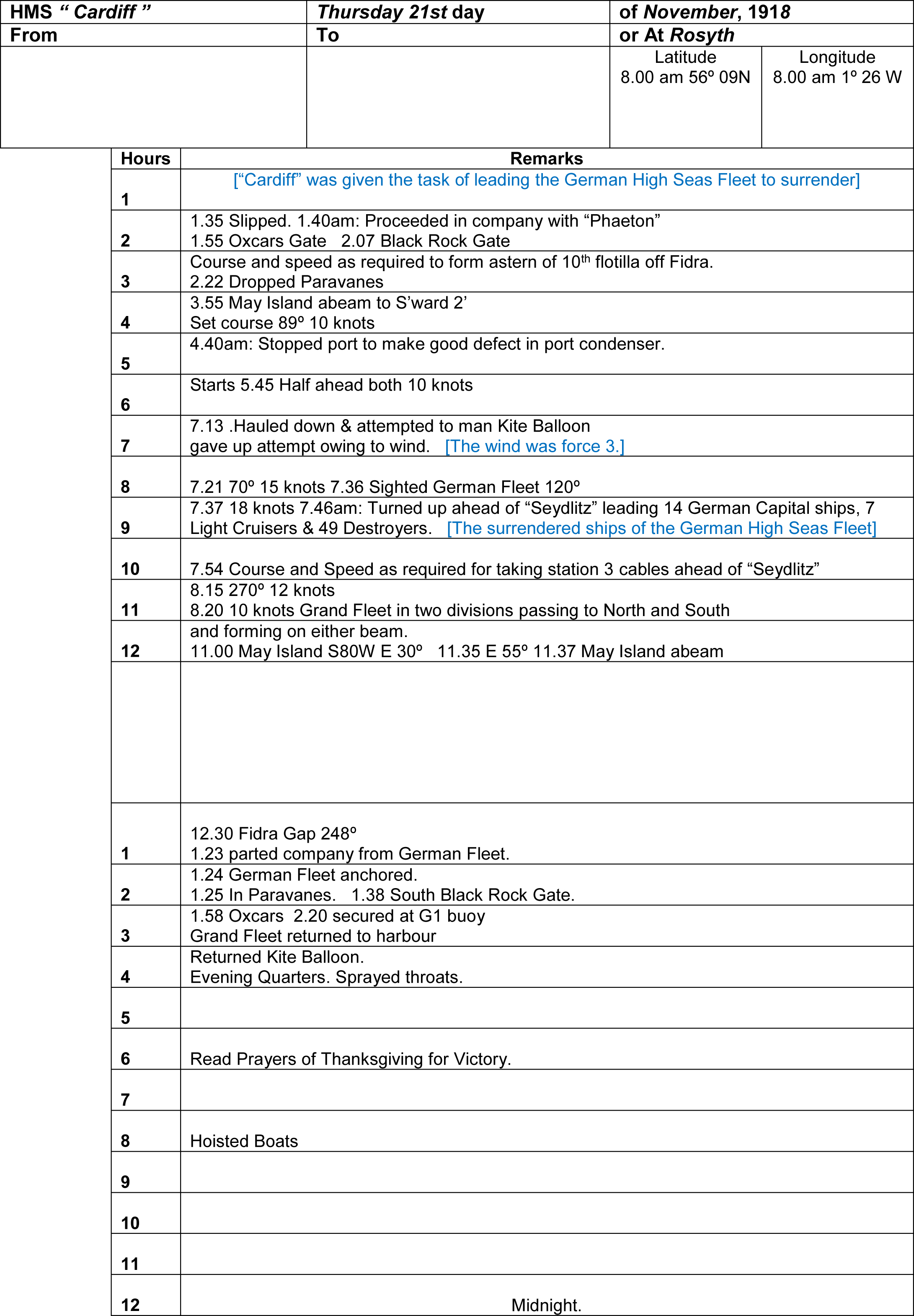
Admiral Beatty’s sailing orders specified the following:

However, Cardiff’s log reports that the wind was too high to man the balloon, so it was probably flown as a beacon.

The German ships had difficulty making 12 knots as they were short of lubricating oil.
These columns of the Grand Fleet sailed down each side of the German line, then executed a battle turn to escort the High Seas Fleet to an anchorage in the Forth.
 The Grand Fleet execute a battle turn – painting by Henry Smyth
The Grand Fleet execute a battle turn – painting by Henry Smyth
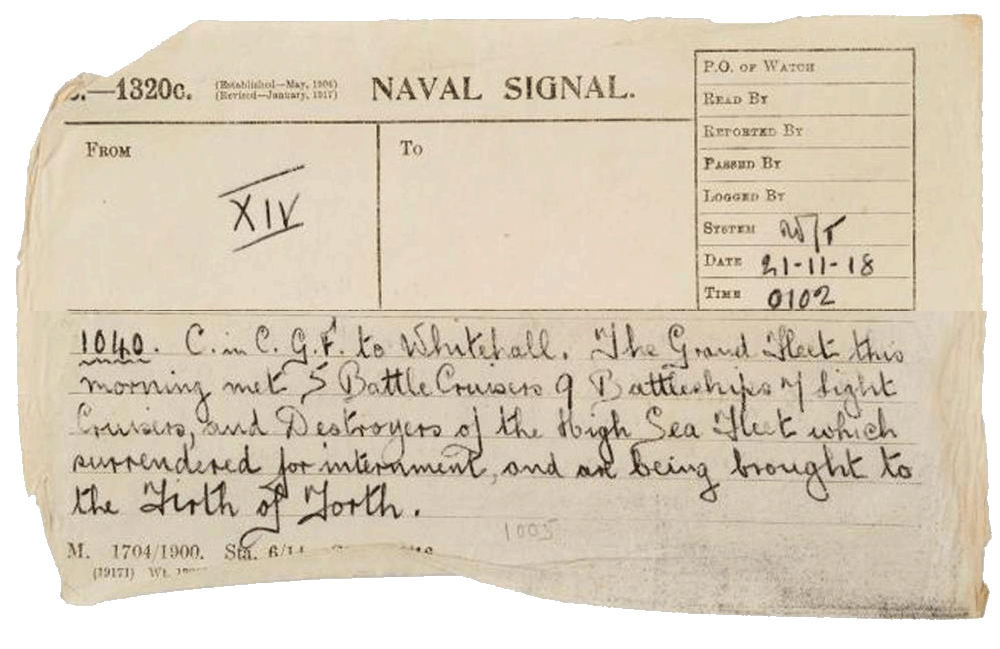
There were some 320 ships and more than 90,000 men in the combined formation.
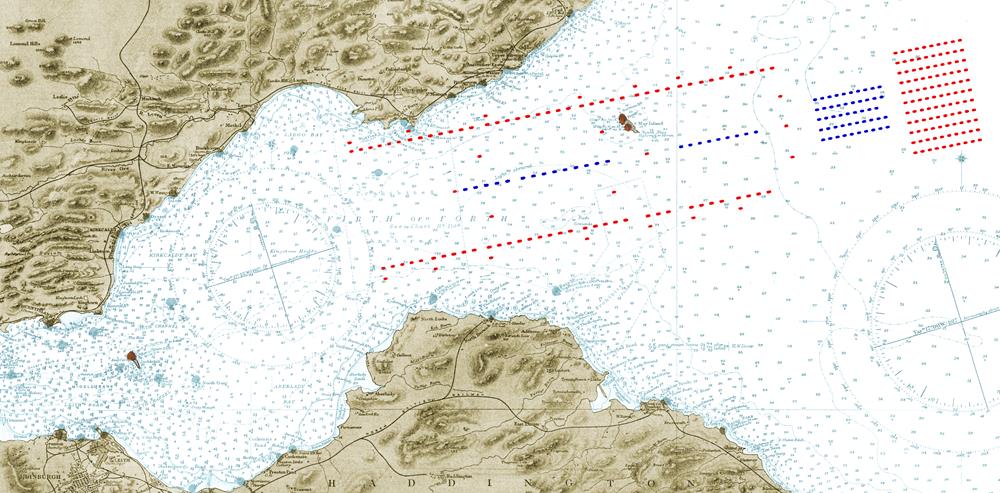 This chart shows the fleet formation when at sea overlaid to scale on a chart of the Firth of Forth, to give an impression of its magnitude.
This chart shows the fleet formation when at sea overlaid to scale on a chart of the Firth of Forth, to give an impression of its magnitude.
The formation stretched over some 25 miles, with relay ships deployed to pass signals from the flagship to the entire fleet.
| < 30 – The Grand Fleet prepares for the surrender | Δ Index | 32 – The Merchant Navy > |